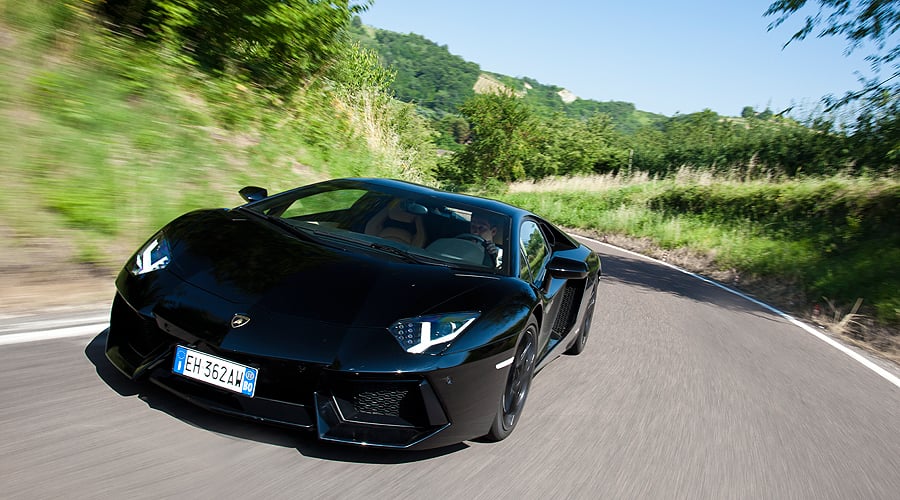
So fast, so powerful, so precise. With 700HP, the Aventador sets an Italian technical benchmark. To find out whether Lamborghini’s latest beast convinces on bumpy highways, we tested it in the hills around Sant'Agata, Italy.
One could say the Aventador’s predecessor - the Murciélago - was both aesthetically and technically a brutal creation. It was fast, loud, barbaric, but essentially just an improved Diablo. In 2003, the Gallardo was the first precision sports car to roll off the production line in Sant'Agata. It was an immediate success, with driving dynamics and engine architecture clearly benefiting from the expertise (and bank balance) of its new owner, Volkswagen AG. Nevertheless, with the new range-topper, premium stablemate Audi was kept carefully in the background and parts-sharing was avoided. In this vein, the Aventador - with its internally developed carbonfibre monocoque chassis, an innovative ISR transmission, pushrod suspension and a completely new 700HP, 6.5-litre V12 engine - is not only the most progressive, but also the most 'independent' Lamborghini in recent generations. Sant'Agata Bolognese has a new reason to be proud.
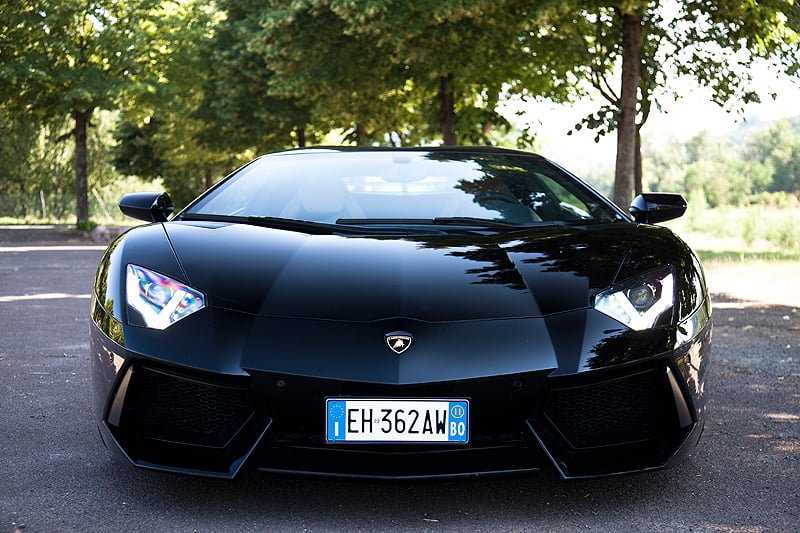
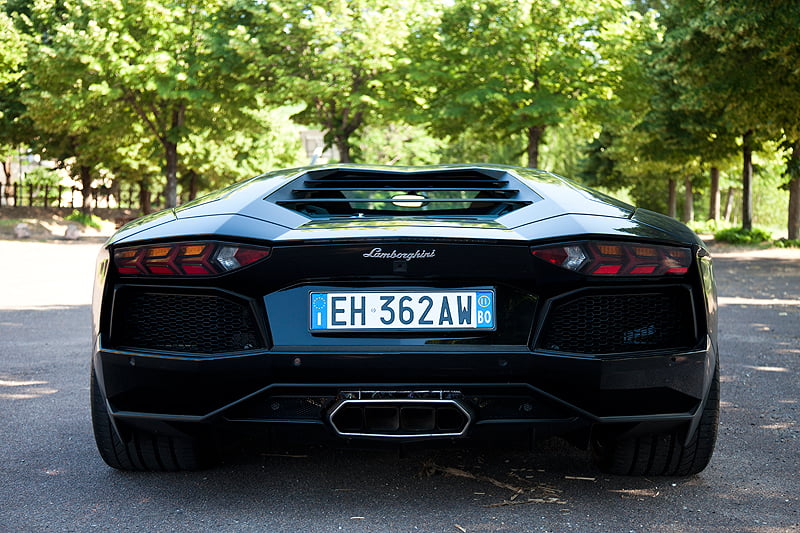
After the hard losses of the economic downturn, the euphoria in the headquarters of the Italian company can be felt clearly. Production of the Aventador has just begun, with cars now being distributed to dealers and first customers. Demand is immense; since the unveiling at Geneva in March, more than 1200 examples of the £250,000 supercar have been ordered and those who order now are unlikely to take delivery before the first quarter of 2013. Since high-tech slingshots like the Aventador must initially sell themselves on aesthetics, numerous design proposals were developed and shown to the decision-makers at VAG. Eventually, a concept from Sant'Agata which remained faithful to the proportions of the predecessor Murciélago became generally accepted. However, the new car took up the sharp-edged form and styling details of the limited-run Reventón and the lightweight Sesto Elemento concept.
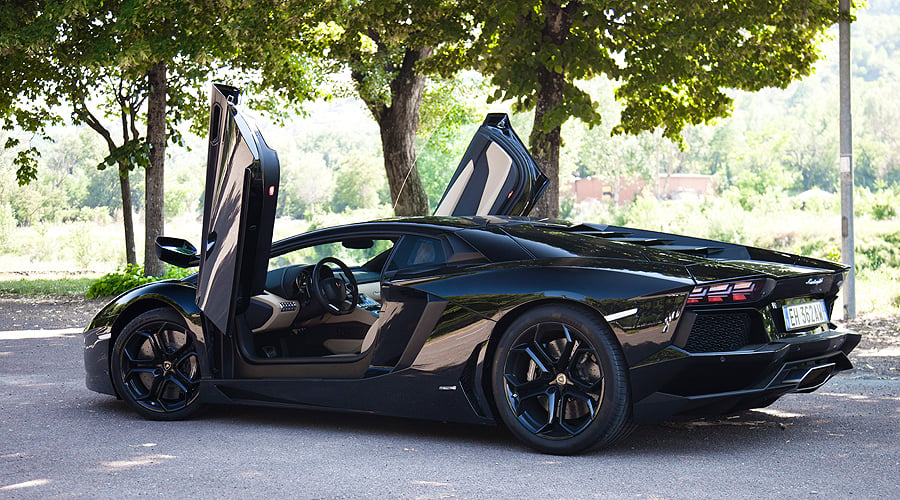
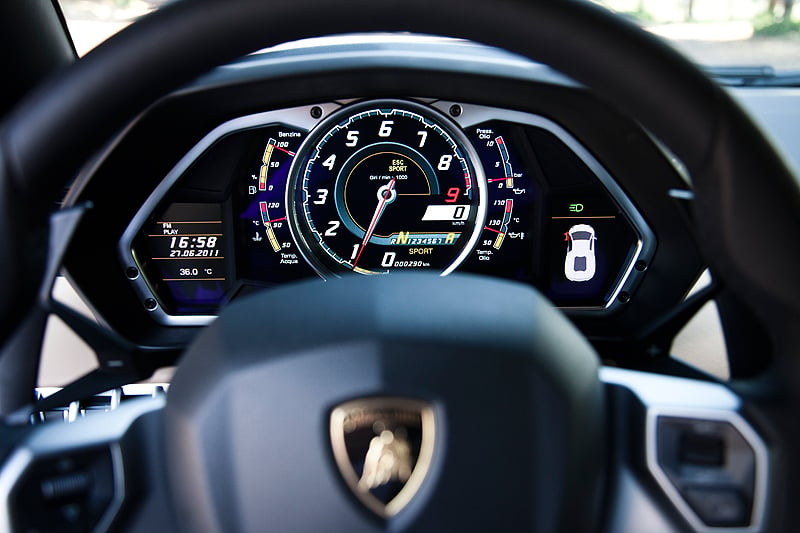
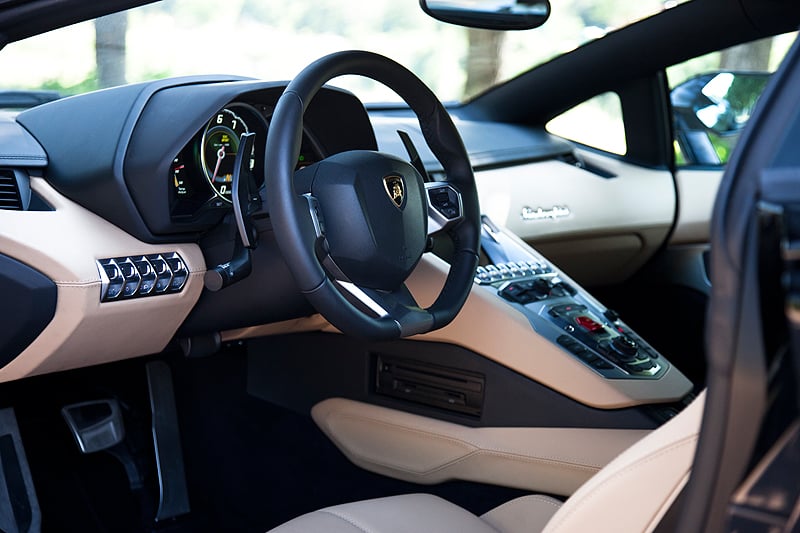
As has been the case for all V12 Lamborghinis since the legendary Countach, the Aventador’s doors open upwards. Entrance is as easy as ever, and the seating position is surprisingly comfortable for a raging bull from Sant'Agata. Even six-footers will find they have sufficient headroom. While the interior of the Murciélago could now be considered rather spartan, the cockpit of the new flagship is highly sophisticated and futuristic, as if it were borrowed from some kind of experimental technology aircraft from Boeing. Take, for example, the red flap on the centre console, which covers the start/stop button; a reference to the missile-firing button in modern fighter planes. Also, the customisable central display is reminiscent of military flight simulators, giving the driver the option of displaying the road speed, or rpm, more prominently.
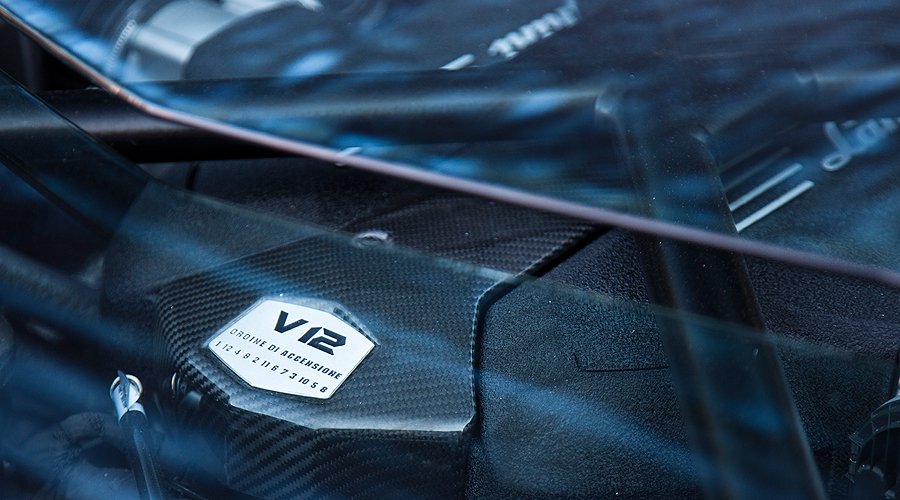
Naturally, the music plays not on the flight deck but in the engine room. That 6.5-litre V12 - internally designated as L539 - was completely redeveloped. With 700HP and 690Nm, the engine is not only more powerful than the angriest version of the outgoing Murciélago – the LP670-4 – but is also smaller and lighter. This results in a lower centre of gravity and a better response in higher gears, owing to a shorter stroke. It would have been easier to import a direct-injection Audi unit but the Aventador has been kept independent at all costs, and rightly so. One of these costs is the 16.4mpg fuel consumption; but one which Lamborghini feels is justified. It also opted to avoid using VAG’s DSG gearbox, instead developing an all-new, automated-manual gearbox with particularly short throws which, it turns out, is more fitting to the performance concept of the Aventador. The so-called ISR transmission (ISR stands for Independent Shifting Rod) has a weight around half that of a double-clutch system, and it changes gear about 40% faster than the E-Gear transmission in the Gallardo.
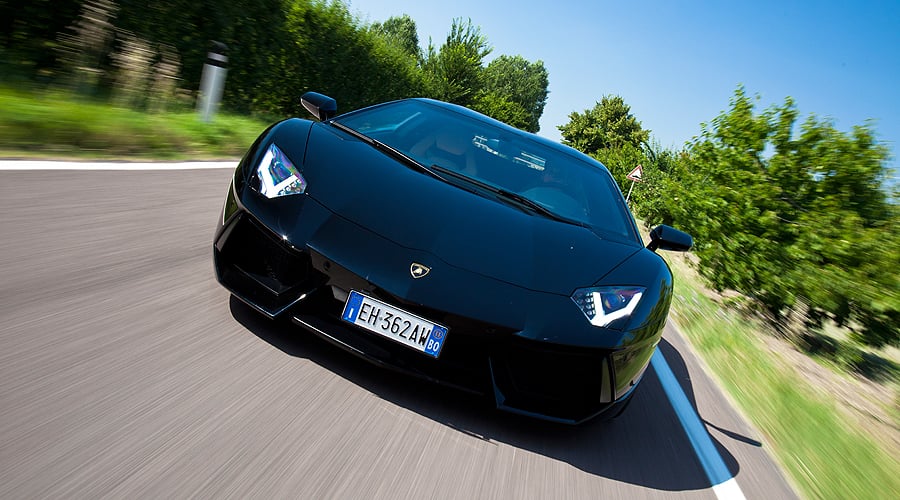
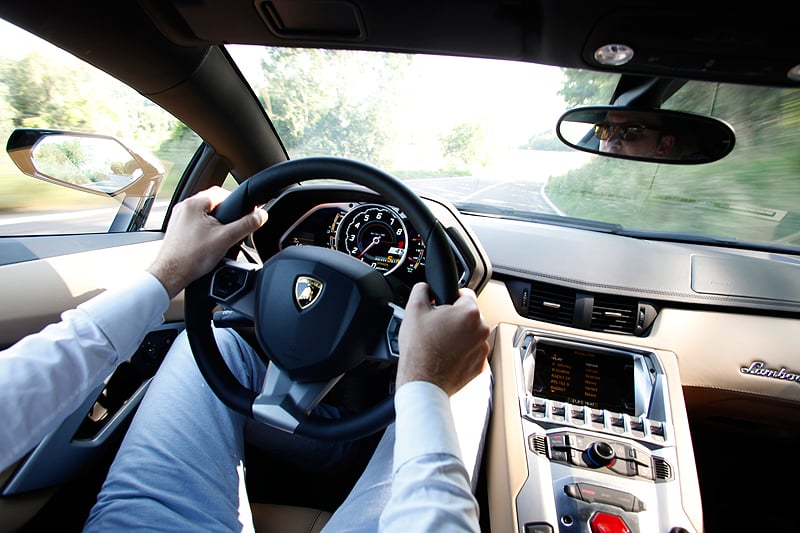
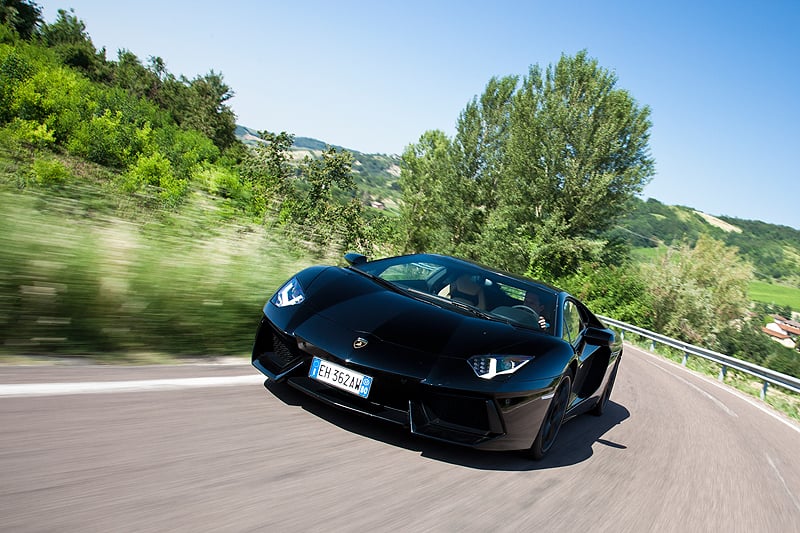
Depending on driving mode (the character of the Aventador varies from gentle force in ‘Strada’, impressive power in ‘Sport’ and uncontrolled violence in ‘Corsa’), the gearchanges can be executed seamlessly, or as hard as a professionally delivered chop to the neck… accompanied by an appropriate soundtrack. The narrow highways in the highlands of Bologna are not the race tracks of Monza or Mugello, yet the Aventador was extensively tested here by the factory drivers - and impressed us during the first few miles with its seemingly almost unlimited power. Owing to the newly-developed carbonfibre monocoque chassis and the lightweight body, the new flagship tips the scales at only 1575kg despite its enormous size, giving a power-to-weight ratio of 2.25kg per HP. A 0-60mph time of 2.9 seconds is almost identical to the significantly lighter and more compact McLaren MP4-12C. The Aventador’s precise steering is razor-sharp through the curves of the Emilia Romagna, more so than any previous Lamborghini; and you can have plenty of fun without ever getting close to the 217mph top speed.
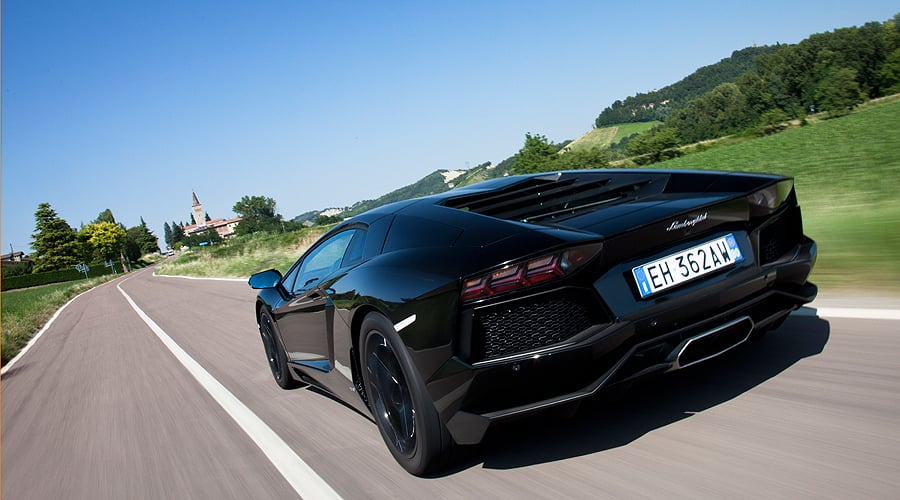
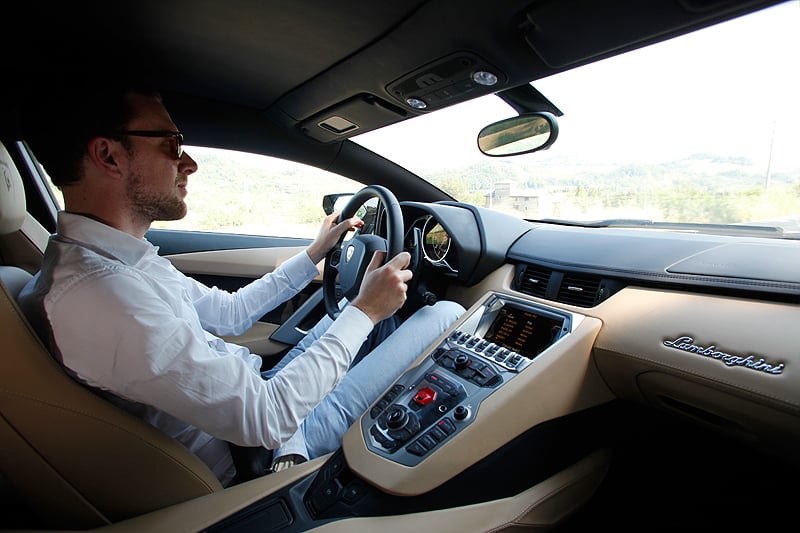
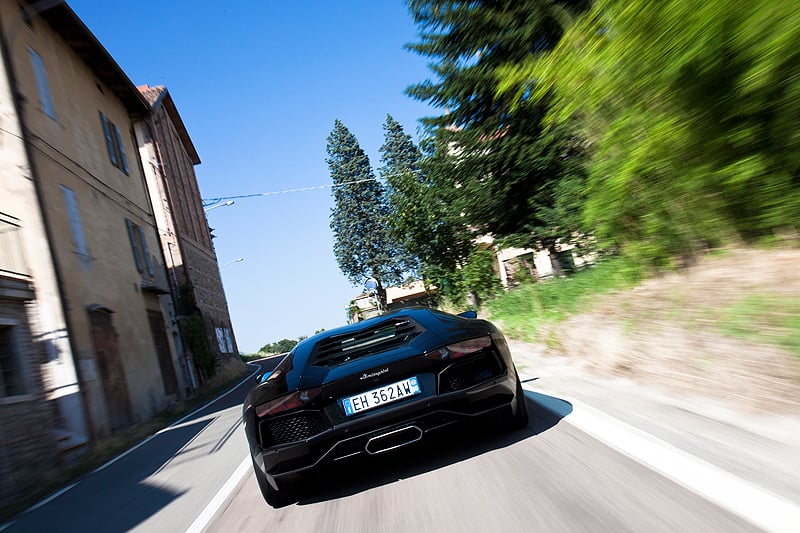
In fact, the Aventador allows even supercar rookies to drive enthusiastically. Driving dynamics have made a quantum leap thanks to the combination of pushrod suspension and a Haldex 4WD system, which distributes power between the front and rear wheels using the latest stability-control technology. However, the rather bumpy mountain roads highlight the lack of an adaptive damping system, such as that which will be used in McLaren’s forthcoming 800HP supercar. Perhaps one will be included on the 2012 Aventador Roadster or the SV version, likely to follow in the medium-term according to brand tradition.
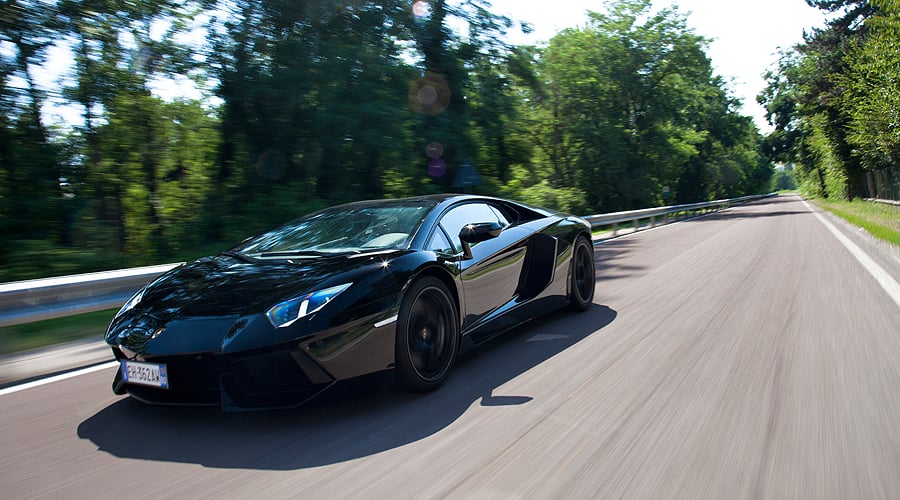
What does impress us, however, is the carbon-ceramic brake assembly: when one stands on the brake pedal, the forces experienced are something that not even the Aventador’s brutal acceleration can match. More exciting still is the soundtrack of the V12, which rises to an almighty thundering at 4000rpm, replacing the frisky nervous flutter and hoarse barking of its predecessor. The Lamborghini Aventador LP700-4 is brutally fast and wonderfully precise – but when required can also be comfortable and subtle. The fact that Bruce Wayne and his alias Batman drive an Aventador in the new Hollywood film The Dark Knight Rises speaks volumes about the car’s own personality - and anyone replacing a Murciélago with an Aventador is likely to approve.
For a classic or modern Lamborghini, look no further than the Classic Driver car database.
Text & Photos: Jan Baedeker
ClassicInside - The Classic Driver Newsletter
Free Subscription!














